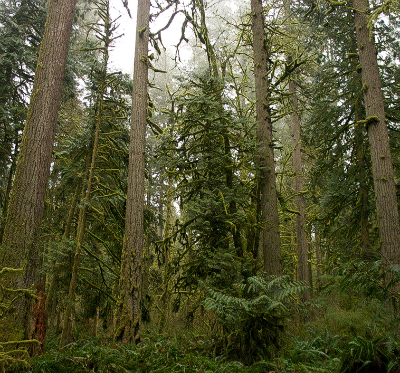Owners of forestland in the Pacific NW could benefit more under a national carbon offsets system, as trees common to the region store more carbon per acre than East Coast species. Pictured: Douglas firs in an Oregon forest.Courtesy Ecotrust’s sbeebe via FlickrThough most people probably think of national parks when they think of forests, more than half of the 750 million acres of forestland in the United States is actually privately owned, much of it by individuals and families, according to the American Forest Foundation, a nonprofit advocacy organization.
Together, these trees suck up about 10 percent of U.S. carbon dioxide emissions annually, according to the Environmental Protection Agency, a portion that could double to almost 20 percent with increased sustainable management practices like replanting cut trees and lengthening cut rotations.
But many of these family-owned lands are small — a few hundred acres in size. Alone, these small plots don’t sequester much carbon. This makes it difficult for forest owners to participate in voluntary carbon markets, which typically trade carbon by the tens of thousands of tons. In addition, private owner... Read more
